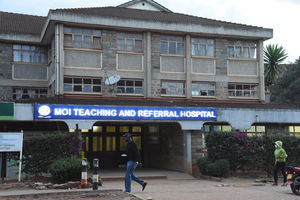Two decades on, China’s BRI delivers net good for Africa

The Nairobi Expressway as it cuts through Westlands right above Waiyaki Way.
It is nearly two decades since China launched its acclaimed Belt and Road Initiative (BRI) which placed peace and development at the heart of international cooperation.
In Africa, nearly all the member states under the auspices of the African Union have signed cooperative agreements with Beijing to be part of the intercontinental initiative. The continent has mustered comprehensive investments and infrastructure upgrades spanning ports, railway lines, roads, telecommunications and energy installations under BRI.
While infrastructure construction remains the most visible component of BRI, the initiative is supported by four other pillars like trade, policy coordination, financial inclusion and cultural exchanges. These four pillars are often bypassed or not discussed enough in both popular and academic discourse yet in concert, they work alongside infrastructure construction to give BRI the edge over other global development initiatives.
Kenya is one of the most successful countries in harnessing the power and potential of BRI.
Signature projects
Through the initiative, Kenya has operationalised signature projects like the Standard Gauge Railway running from the Port City of Mombasa to the administrative capital, Nairobi.
Others include the Nairobi Expressway, the Lamu Port, ring of roads and the Konza smart city.
The upgrades have greatly boosted Nairobi’s place as a regional transport hub with the SGR having marked 2000 days of safe and efficient transportation of cargo, and people.
So far, the SGR passenger service has ferried over 8.78 million passengers while the freight service has transported 22.69 million tonnes of cargo.
On the trade front, China is today Kenya’s largest trading partner. Nairobi has negotiated a raft of agricultural export promotion initiatives that recently enabled it to be the first African country to export fresh avocados to the Chinese market. During the three months ending in October 2022, Kenyan farmers shipped 1.7 million tons of avocados to China valued at US$57 million. As China continues to open to the rest of the world, more African products are expected to tap into the arising market.
BRI has been a veritable avenue of technology transfer besides creating thousands of jobs in Kenya. Today, Nairobi boasts of a critical mass of expertise in rail technology including a new breed of female engineers and drivers.
The BRI’s cultural exchange programmes have also seen many young Kenyans turn to China for higher education; fuelled by Chinese government scholarships and increased acceptability of Chinese education by Kenyan government agencies and other employers.
According to the “African Youth Survey 2022,”commissioned by Ichikowitz Foundation in June this year, 76% of young people view China’s influence as positive while 77% see China as the foreign country with most influence on their continent
Although China tends to court Africa as a collective entity through the Forum on China-Africa Cooperation, where many of the policy discussions are hammered; implementation of FOCAC outcomes are mostly on bilateral bases.
Partnership deals
As a regional financial hub, Kenya has also been instrumental in aiding BRI’s financial inclusion pillar. Chinese financial service providers such as WeChat and Alipay have sealed partnership deals with Kenya’s Equity Bank that has operational footprints in East and Central Africa. All these action steps have spurred business transactions and e-commerce between China and African partners.
To further harness the potential of BRI, African countries should proactively explain to the public the cooperative arrangements under BRI. This will ensure greater public buy-in; and scatter the prevailing disinformation.
Secondly, African countries should as much as possible map their development programmes on the aspirations of the BRI. In many ways, BRI is aligned to the Africa Agenda 2063 and the Continental Free Trade Area. Such mapping will deliver maximum returns to the citizens.
One approach could be the adoption of the public private partnerships in BRI implementation. Such arrangements promote sharing of responsibilities, decision making and resource allocation in the overall project’s life.
The writer is a scholar of international relations with a focus on China-Africa cooperation.Twitter: @Cavinceworld





